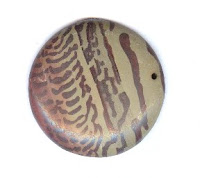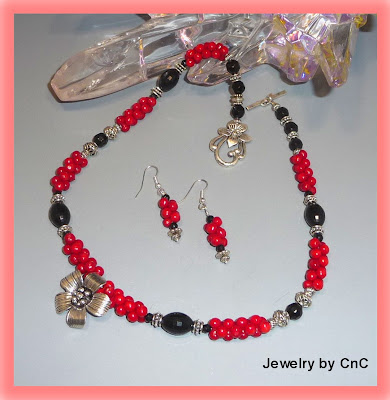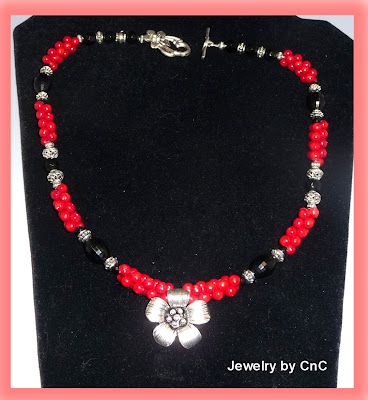
Sea Glass, not a gemstone, not natural, but is one of the very few cases which a valuable item has been created from the actions of the environment on man-made litter..
 Sea glass (known by many varied names the world over - some of the more common being beach glass, mermaid's tears, lucky tears, sea tears) is usually found on beaches along oceans or large lakes that have a lot of wave action which causes the glass to have been tumbled and smoothed by the water and sand, creating small pieces of smooth, frosted glass. Do not be pulled in by some of the newly created man-made frosted glass being sold by dealers claiming that it is Sea Glass.
Sea glass (known by many varied names the world over - some of the more common being beach glass, mermaid's tears, lucky tears, sea tears) is usually found on beaches along oceans or large lakes that have a lot of wave action which causes the glass to have been tumbled and smoothed by the water and sand, creating small pieces of smooth, frosted glass. Do not be pulled in by some of the newly created man-made frosted glass being sold by dealers claiming that it is Sea Glass.
.


The color of sea glass is determined by its original source. Most sea glass comes from bottles, but it can also come from jars, plates, windows, windshields, glasses, art, flasks, containers, and any other glass source that has found its way into the ocean.
Some collectors also collect what is known as sea pottery. Many very interesting jewelry pieces can be made out of the collected Sea Glass.
 The most common colors of sea glass are kelly green, brown, and clear. These colors come from bottles used by companies that sell beer, juices, and soft drinks. The clear or white glass comes from clear plates and glasses, windshields, windows, and assorted other sources. Some less common colors include jade, amber (from bottles for whiskey, medicine, spirits, and early bleach bottles), golden amber (mostly used for spirit bottles), lime green (from soda bottles during the 1960s), forest green, and soft blue (from soda bottles, medicine bottles, ink bottles, and fruit jars from the late 1800s and early 1900s, windows, and windshields.) These colors are found about once for every 25 to 100 pieces of sea glass found.
The most common colors of sea glass are kelly green, brown, and clear. These colors come from bottles used by companies that sell beer, juices, and soft drinks. The clear or white glass comes from clear plates and glasses, windshields, windows, and assorted other sources. Some less common colors include jade, amber (from bottles for whiskey, medicine, spirits, and early bleach bottles), golden amber (mostly used for spirit bottles), lime green (from soda bottles during the 1960s), forest green, and soft blue (from soda bottles, medicine bottles, ink bottles, and fruit jars from the late 1800s and early 1900s, windows, and windshields.) These colors are found about once for every 25 to 100 pieces of sea glass found.
 One might rarely see sea glass which comes primarily from early to mid-1900s Coca-Cola, Dr Pepper, and RC Cola bottles, as well as beer bottles. Seaq glass which is hardly ever seen, but when found is a golden treasure is purple, citron, opaque white (from milk glass), cobalt and cornflower blue (from early Milk of Magnesia bottles, poison bottles, artwork, and Bromo-Seltzer and Vicks VapoRub containers), and aqua (from Ball Mason jars and 19th century glass bottles.) These are a one in a thousand find. An extremely rare color is black. The black glass is quite old, originating from thick eighteenth-century gin, beer and wine bottles, maybe one in a ten-thousand find.
One might rarely see sea glass which comes primarily from early to mid-1900s Coca-Cola, Dr Pepper, and RC Cola bottles, as well as beer bottles. Seaq glass which is hardly ever seen, but when found is a golden treasure is purple, citron, opaque white (from milk glass), cobalt and cornflower blue (from early Milk of Magnesia bottles, poison bottles, artwork, and Bromo-Seltzer and Vicks VapoRub containers), and aqua (from Ball Mason jars and 19th century glass bottles.) These are a one in a thousand find. An extremely rare color is black. The black glass is quite old, originating from thick eighteenth-century gin, beer and wine bottles, maybe one in a ten-thousand find.
Anyone that is really interested in Sea Glass should check out the North American Sea Glass Association at http://seaglassassociation.org/ for more information and collectors near your location.At this time, Jewelry by CnC has not yet used Sea Glass in any of our designs.
 Holiday elegance in red/gold/white large round Lampwork beads. These are surrounded by amber and red Crystals and clusters of red and clear glass beads with golden woven accent pieces. The combination is great for Holiday or anytime wearing.
Holiday elegance in red/gold/white large round Lampwork beads. These are surrounded by amber and red Crystals and clusters of red and clear glass beads with golden woven accent pieces. The combination is great for Holiday or anytime wearing. This 19 inch necklace used a gold plated Toggel clasp for closure.
This 19 inch necklace used a gold plated Toggel clasp for closure. Gold plated French Hook dangle earrings complete the set.
Gold plated French Hook dangle earrings complete the set.
 Lampworking is a type of glasswork that uses a gas fueled torch to melt rods and tubes of clear and colored glass. Once in a molten state, the glass is formed by blowing and shaping with tools and hand movements. It was also known as flameworking or torchworking, but the modern practice no longer uses oil-fueled lamps. Although the art form has been practiced since ancient Syrian (1 Century B.C.E.) times, it became widely practiced in Murano, Italy in the 14th century. In the mid 19th century lampwork technique was extended to the production of paperweights, primarily in France, where it became a popular art form, still collected today. Lampworking differs from glassblowing in that glassblowing uses a blowpipe to inflate a glass blob known as a gob or gather, whereas lampworking manipulates glass either by the use of tools, gravity, or by blowing directly into the end of a glass tube.
Lampworking is a type of glasswork that uses a gas fueled torch to melt rods and tubes of clear and colored glass. Once in a molten state, the glass is formed by blowing and shaping with tools and hand movements. It was also known as flameworking or torchworking, but the modern practice no longer uses oil-fueled lamps. Although the art form has been practiced since ancient Syrian (1 Century B.C.E.) times, it became widely practiced in Murano, Italy in the 14th century. In the mid 19th century lampwork technique was extended to the production of paperweights, primarily in France, where it became a popular art form, still collected today. Lampworking differs from glassblowing in that glassblowing uses a blowpipe to inflate a glass blob known as a gob or gather, whereas lampworking manipulates glass either by the use of tools, gravity, or by blowing directly into the end of a glass tube.




 Crazy Lace Agate oval beads and tanzanite colored Crystals join with silver plated accents to make this 20 inch simply elegant necklace.
Crazy Lace Agate oval beads and tanzanite colored Crystals join with silver plated accents to make this 20 inch simply elegant necklace.











 Matching copper French Hook dangle earrings complete the set.
Matching copper French Hook dangle earrings complete the set.









 The Toggle clasp is polished pewter on the 19 inch necklace.
The Toggle clasp is polished pewter on the 19 inch necklace. Silver plate French Hook gangle earrings complete the set.
Silver plate French Hook gangle earrings complete the set.








 The clasp is a Sterling Silver hook with a Figure-8 loop.
The clasp is a Sterling Silver hook with a Figure-8 loop.






